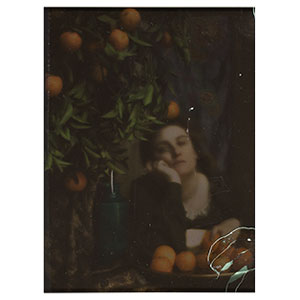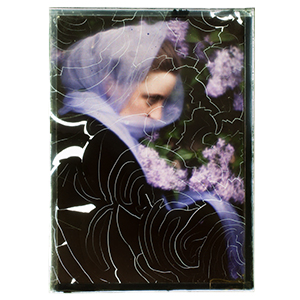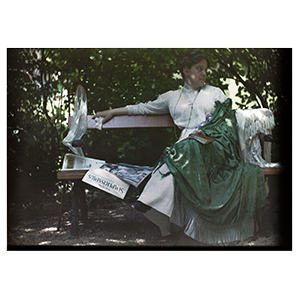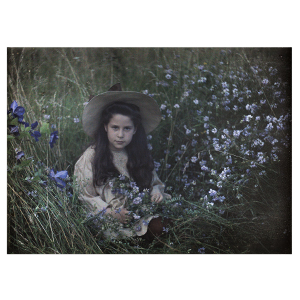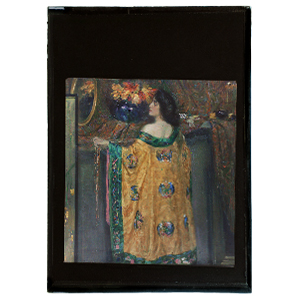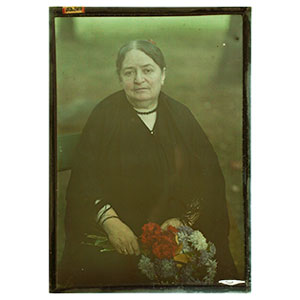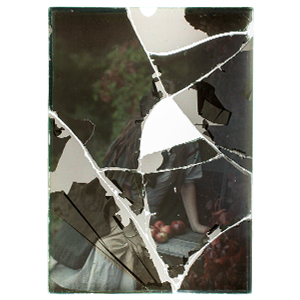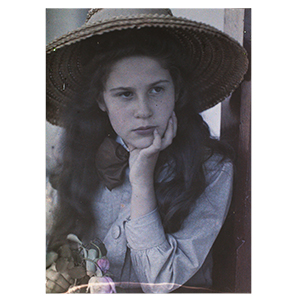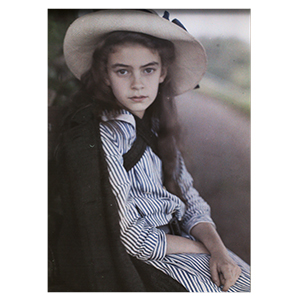Autochrome
1907–1934
Invented by Auguste and Louis Lumière in 1903 and released to the public in 1907, autochromes offered the first practically applicable color-photography process. The plates—unique color positive transparencies viewed against diffuse light or projected—were created by layering potato starch particles that had been dyed red-orange, green, and blue-violet between glass and light-sensitive black-and-white emulsion. When exposed in the camera, light passed through the colored grains, selectively exposing the emulsion beneath. While regular processing would result in a negative image, reversal development inverted the areas of dark and light, creating a positive image. When the finished autochrome is viewed, the dyed starch particles act as tiny light filters, creating the appearance of a full-color image. Although praised by Stieglitz and Steichen for their luminosity, autochromes were difficult to duplicate and exhibit and therefore fell out of favor with the advent of color film.

